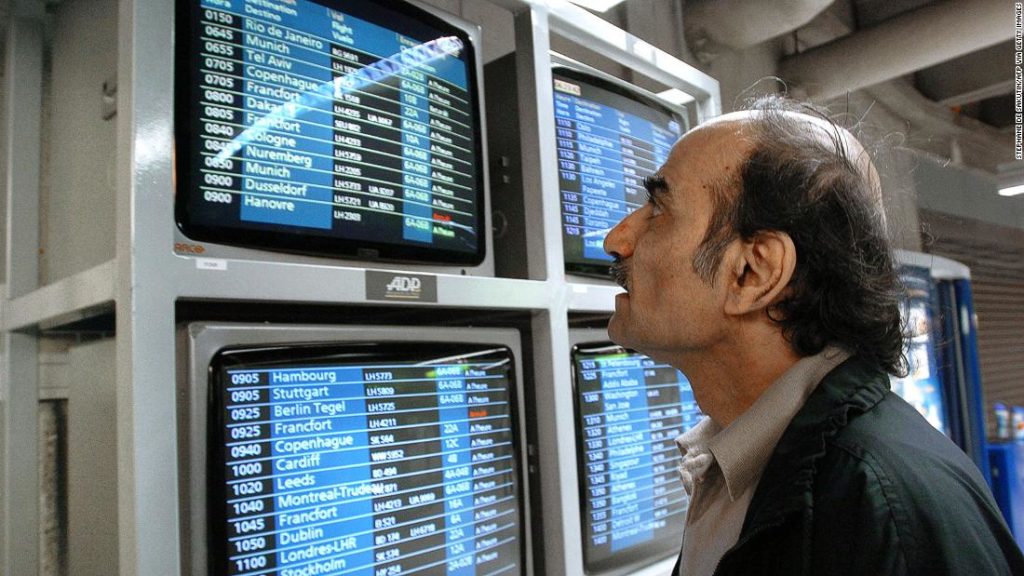Singh, however, is far from the first to pull off an extended stay. After more than two decades studying the history of airports, I’ve come across stories about individuals who have managed to take up residence in terminals for weeks, months and sometimes years.
Interestingly, though, not all of those who find themselves living in an airport do so of their own accord.
Blending in with the crowd
Whether it’s in video games like “Airport City” or scholarship on topics like “airport urbanism,” I’ll often see the trope that airports are like “mini cities.” I can see how this idea germinates: Airports, after all, have places of worship, policing, hotels, fine dining, shopping and mass transit.
But if airports are cities, they’re rather strange ones, in that those running the “cities” prefer that no one actually takes up residence there.
Nonetheless, it is possible to live in airports because they do offer many of the basic amenities needed for survival: food, water, bathrooms and shelter. And while airport operations do not necessarily run 24/7, airport terminals often open very early in the morning and stay open until very late at night.
Many of the facilities are so large that those determined to stay — such as the man at O’Hare — can find ways to avoid detection for quite some time.
One of the ways would-be airport residents avoid detection is to simply blend in with the crowds. Before the pandemic, US airports handled 1.5 million to 2.5 million passengers on any given day.
Once the pandemic hit, the numbers dropped dramatically, falling below 100,000 during the early weeks of the crisis in the spring of 2020. Notably, the man who lived at O’Hare for a little over three months arrived in mid-October 2020 as passenger numbers were experiencing a rebound. He was discovered and apprehended only in late January 2021 — right when passenger numbers dropped considerably after the holiday travel peaks and during the resurgence of the coronavirus.
Living in limbo
Not all of those who find themselves sleeping in a terminal necessarily want to be there.
Travel by air enough and chances are that, at one time or another, you’ll find yourself in the category of involuntary short-term airport resident.
While some people may book flights that will require them to stay overnight at the airport, others find themselves stranded at airports because of missed connections, canceled flights or bad weather. These circumstances seldom result in more than a day or two’s residency at an airport.

Someone catches some rest in the departure hall of Tokyo’s Haneda Airport in March 2020.
PHILIP FONG/AFP via Getty Images
Then there are those who unwittingly find themselves in an extended, indefinite stay. Perhaps the most famous involuntary long-term airport resident was Mehran Karimi Nasseri (pictured at the top of this story), whose story reportedly inspired the movie “The Terminal,” starring Tom Hanks.
Nasseri, an Iranian refugee, was en route to England via Belgium and France in 1988 when he lost the papers that verified his refugee status. Without his papers, he could not board his plane for England. Nor was he permitted to leave the Paris airport and enter France. He soon became an international hot potato as his case bounced back and forth among officials in England, France and Belgium. At one point French authorities offered to allow him to reside in France, but Nasseri turned down the offer, reportedly because he wanted to get to his original destination, England. And so he stayed at Charles de Gaulle Airport for nearly 18 years. He left only in 2006, when his declining health required hospitalization.

US National Security Agency fugitive leaker Edward Snowden (center) was stuck in transit at Moscow’s Sheremetyevo airport from June to August 2013.
AFP via Getty Images
The homeless find refuge
While most involuntary airport residents long to leave their temporary home, there are some who have voluntarily attempted to make an airport their long-term abode. Major airports in both the United States and Europe have long functioned — though largely informally — as homeless shelters.
Though homelessness and the homeless have a long history in the United States, many analysts see the 1980s as an important turning point in that history, as many factors, including federal budget cuts, the deinstitutionalization of the mentally ill and gentrification, led to a sharp rise in the number of homeless. It is in that decade that you can find the earliest stories about the homeless living at US airports.
The coronavirus pandemic has added an additional public health concern for this group of airport denizens.
For the most part, airport officials have tried to provide aid to these voluntary residents. At Los Angeles International Airport, for example, officials have deployed crisis intervention teams to work to connect the homeless to housing and other services. But it’s also clear that most airport officials would prefer a solution where airports no longer operated as homeless shelters.
Top image: A photograph from 2004 shows Mehran Karimi Nasseri checking the monitors at Charles de Gaulle Airport, where he lived for nearly 18 years. (Photo by Stephane de Sakutin/AFP via Getty Images).
Janet Bednarek is a professor of history at University of Dayton.
You may also like
-
Afghanistan: Civilian casualties hit record high amid US withdrawal, UN says
-
How Taiwan is trying to defend against a cyber ‘World War III’
-
Pandemic travel news this week: Quarantine escapes and airplane disguises
-
Why would anyone trust Brexit Britain again?
-
Black fungus: A second crisis is killing survivors of India’s worst Covid wave


